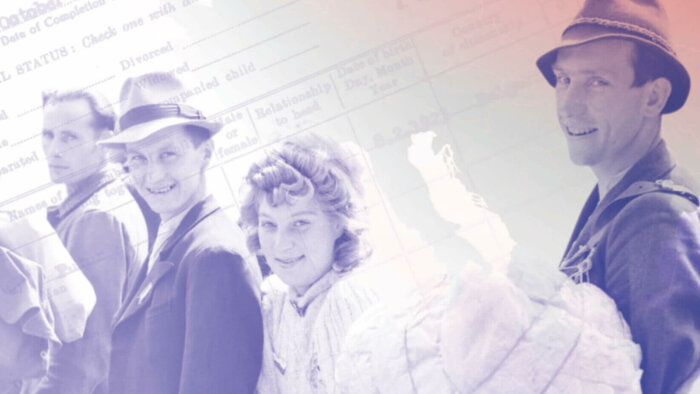One Hundred Percent Digital

Digitizing all the documents, making them searchable online, renewing the IT infrastructure, finding strong partners for networking: The Arolsen Archives have ambitious plans for the next 5 years. We want to share our knowledge with as many people as possible because our documents tell the stories of millions of Nazi persecutees. To this end, we are developing new digital services that bring memories of the past into the present and bring to life the fates suffered by victims of persecution.
The Arolsen Archives are moving forward step by step on the path to becoming a modern center of knowledge about Nazi persecution. Not only do we want our information and our documents to be available on the internet in future, we also want to link them, not only with each other, but also with other organizations. This is why our Digital Strategy formulates five goals that we want to achieve by 2025:
- Digitize all the 30 million documents in our archive and the over 20 million correspondence files
- Install a new data management system
- Index all the names of the victims of Nazi persecution in our archive so that the documents can be searched automatically
- Make the whole archive available online
- Make it possible to call up the paths of persecution of the victims as well as contextual information
Progress so far
Ninety percent of our paper documents have already been digitized. Many millions of documents are available in our online archive and can be searched for names. So the first steps towards achieving our 2025 goals have already been taken. A great deal now needs to be done to set up the infrastructure we need: We currently rely on an external service provider for the data management system that is currently in use at the Arolsen Archives – i.e. the system we use to digitally manage the millions of documents and pieces of information in our archive. In order to meet future requirements, we are now looking for a powerful platform that we can manage and develop ourselves. The new platform must be capable of supporting the complex online services that we want to provide in the future. And that is not all:

“We need IT specialists of our own to develop the new system with us. And we are looking for digitization specialists who can help us make our archive accessible for digital research.”
Achim Link, Head of Processes and IT at the Arolsen Archives
Considerable resources required
“In the coming years, the Arolsen Archives will recruit at least six high-qualified specialists for digitization projects. Indexing the documents will also require an enormous amount of resources. This process involves recording all the important data, such as names, places, and dates, in digital form. Only when this process has been completed will users be able to search the documents for this information online. Even if the archive contains a large number of different documents on a user’s grandfather, for example, good indexing will make it possible to access all the information there is “with just one click.”
Digitalization in numbers
Renewing our digital infrastructure and implementing complex projects like linking information to the documents are some of our most important tasks. Over the next five years, we want to support digital progress by:
Paths of persecution
Once all the documents have finally been digitized and indexed and once they have been made available on an online platform, we will move on to the final step in our digital strategy: We want to provide a comprehensive online representation of the lives led by victims of Nazi persecution. As well as being able to see which documents on a particular person or topic are available in our archive, we also want users to be able to receive data from other institutions and access contextual information. The aim is to improve and deepen understanding of the paths the victims’ lives took. In 2019, we launched numerous collaborative projects with partners like Ancestry, Google, and various research institutes in order to move closer to achieving this goal. We plan to present the first results by 2025.


First pilot projects
Since the end of 2019, we have been showing the paths of persecution of a large number of Displaced Persons on a map of the world which can be accessed on the “Transnational Remembrance of Nazi Forced Labor and Migration” web portal. Multi-media “Story Maps” tell the stories of the people’s lives. Users are not only invited to explore the interactive portal, they are also encouraged to join in and develop their own projects.

